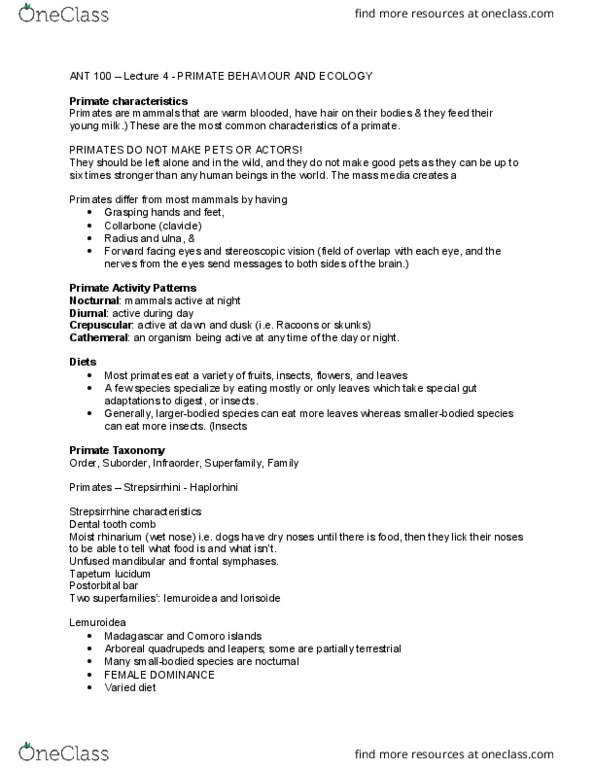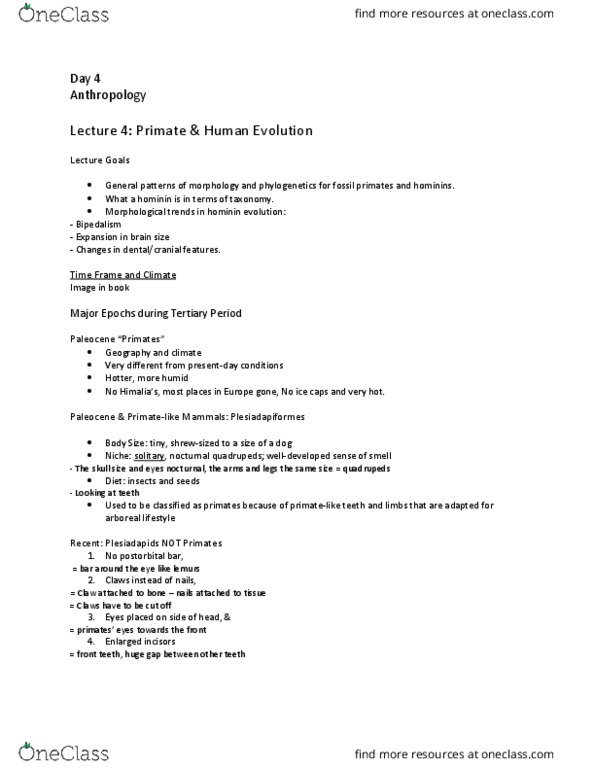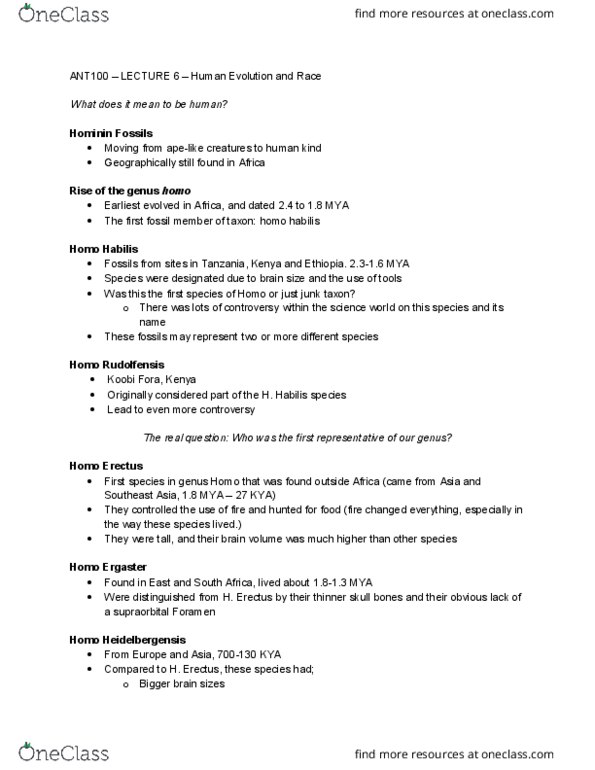ANT100Y1 Lecture 5: ANT100Y1 Lecture 4: Anthropology Day 4: Primate & Human Evolution
ANT100Y1 verified notes
5/13View all
Document Summary
Lecture goals: general patterns of morphology and phylogenetics for fossil primates and hominins, what a hominin is in terms of taxonomy, morphological trends in hominin evolution: Paleo(cid:272)e(cid:374)e (cid:862)pri(cid:373)ates(cid:863: geography and climate, very different from present-day conditions, hotter, more humid, no hi(cid:373)alia"s, most places in europe gone, no ice caps and very hot. Paleocene & primate-like mammals: plesiadapiformes: body size: tiny, shrew-sized to a size of a dog, niche: solitary, nocturnal quadrupeds; well-developed sense of smell. The skull size and eyes nocturnal, the arms and legs the same size = quadrupeds: diet: insects and seeds. Looking at teeth: used to be classified as primates because of primate-like teeth and limbs that are adapted for arboreal lifestyle. Recent: plesiadapids not primates: no postorbital bar, = bar around the eye like lemurs: claws instead of nails, = claw attached to bone nails attached to tissue. = claws have to be cut off: eyes placed on side of head, &




